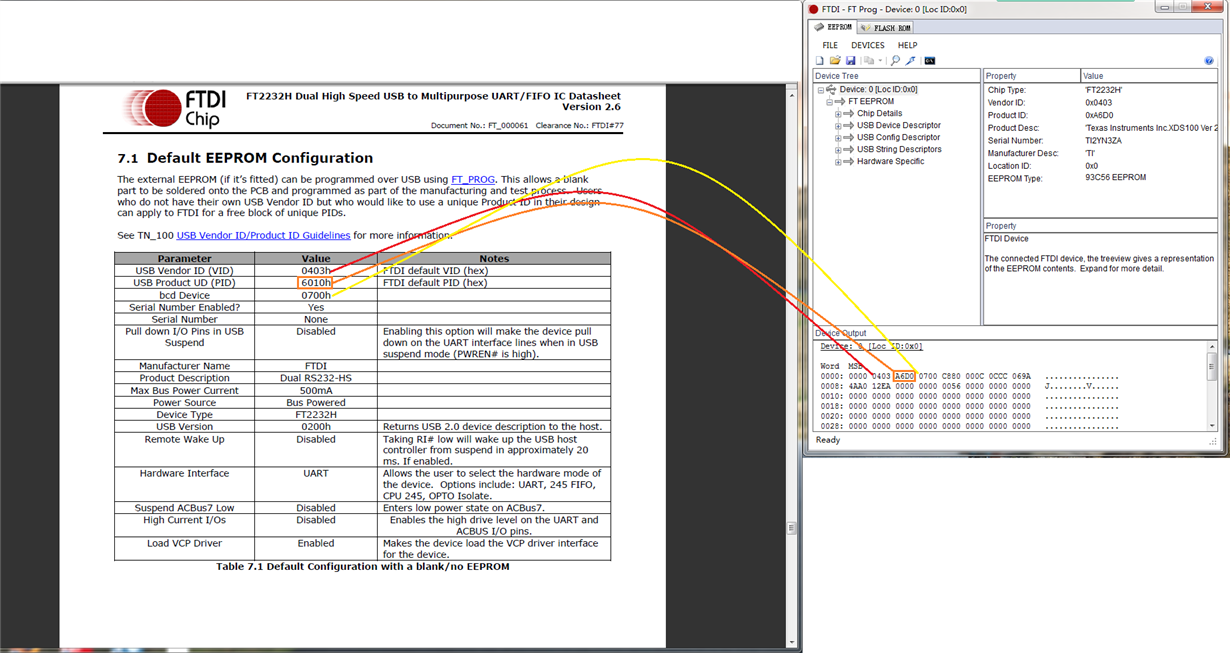Other Parts Discussed in Thread: LAUNCHXL-F28379D
Tool/software: Code Composer Studio
Hi,all
Recently I've been learning something about onboard debugging systems.
I learned that EEPEOM requires configuration. To burn EEPEOM, FT_PROG, the burning tool of FTDI, is required.
Using this tool, I first read the onboard EEPEOM content of the 28069M LaunchpadXL:
When I compared the reads, it seemed that only a few words, VID, PID, and bcdDevice could be associated with the description of the document.
Then, I read the on-board EEPEOM content of 28379D Launchpadxl and compared it with the on-board EEPROM content of 28069 Launchpadxl, as shown below:
As you can see, there are some differences between the two results. The "XDS100Ver2.0" emulator model can be seen from the contents at the back of the memory.
Question 1. FT_PROG can be used to read the contents of TI LaunchpadXL on-board EEPROM. Can the same function be achieved by burning the contents read to the on-board debugging system designed by oneself?
Question 2. With FT_PROG, burning contents of EEPROM can be configured. Can TI provide guidance documents?
Question 3. I don't know how the content in EEPEOM corresponds to the simulation type number selected by TargetConfiguration when burning in CCS development environment. From my personal understanding, in FT2232H, multi-protocol Synchronous Serial Engine (MPSSE) supports JTAG, and CCS software is installed with its own emulator driver. From EEPEOM, you can see the model number of XDS100Ver2.0 emulator. Is the so-called configuration in the onboard system telling CCS software that the current simulation number used by LaunchpadXL is XDS100Ver2.0, so as to establish an association, if the TargetConfiguration selected is not XDS100Ver2.0, an error will be reported.
Question 4. The onboard debugging system is the JTAG implemented by FT2232H multi-protocol Synchronous Serial Engine (MPSSE). Isit can be considered as a general JTAG debugging interface design, not exclusive to XDS100 or TI company. Are the faster XDS200 emulators, or other types such as 560 and 510, made with FPGA?
Question 5. Whether 28069 or 28379, can TI give a detailed explanation of the contents in EEPROM?



